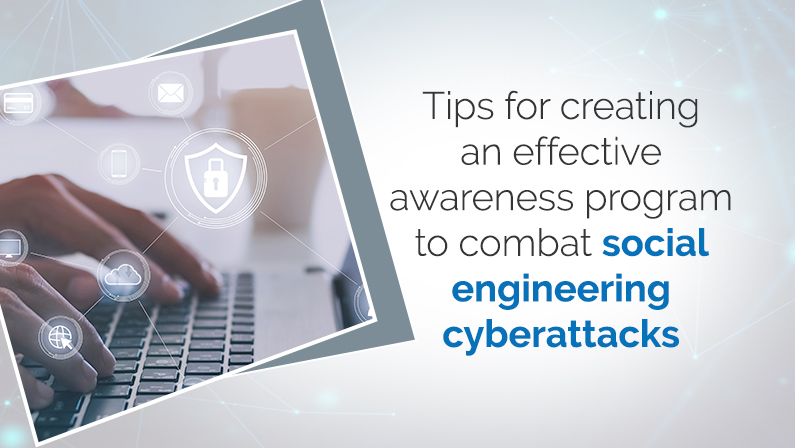Creating an effective awareness program for employees to combat social engineering in cyberattacks involves several key steps and considerations:
Understand Your Audience:
Tailor the program to suit the knowledge level and roles of your employees. Different departments may face different types of social engineering attacks.
Regular Training Sessions:
Organize regular training sessions to keep employees updated on the latest social engineering tactics. This could include workshops, webinars, or e-learning courses.
Real-world Examples and Simulations:
Use real-world examples to illustrate how social engineering attacks happen. Simulated phishing exercises can be particularly effective, as they give employees hands-on experience in identifying suspicious messages.
Clear Reporting Procedures:
Make sure employees know how to report suspected social engineering attempts. A clear, simple reporting process encourages prompt action.
Promote a Culture of Security:
Encourage a workplace culture that prioritizes cybersecurity. This includes having management lead by example and regularly communicating the importance of vigilance against social engineering.
Regular Communication:
Regularly communicate about cybersecurity, including updates on new threats and reminders of best practices. Newsletters, emails, or brief meetings can be effective.
Personal Relevance: Show employees how cybersecurity practices can protect not only the company but also their personal information. This can make the training more engaging and relatable.
Feedback and Improvement:
Collect feedback from employees about the training programs and use this to improve future sessions. Understanding what works and what doesn’t is key to an effective program.
Incorporate Behavioral Principles:
Understanding psychological tactics used by social engineers can help in designing training that makes employees more resistant to these tactics. Teaching about principles like authority, urgency, and social proof can be beneficial.
Recognition and Rewards:
Recognize and reward employees who demonstrate good cybersecurity practices. This can encourage others to follow suit.
Continual Learning: Cybersecurity is an ever-evolving field. Ensure that the program is updated regularly to keep pace with the latest developments in social engineering tactics.
Diverse Learning Materials:
Use a variety of materials and methods (videos, infographics, quizzes, interactive sessions) to cater to different learning styles and keep the program engaging.
Legal and Compliance Aspects:
Ensure that the program also covers legal and compliance aspects relevant to your industry, especially regarding data protection and privacy.
By following these recommendations, you can create a robust awareness program that significantly reduces the risk of social engineering attacks on your organization.





